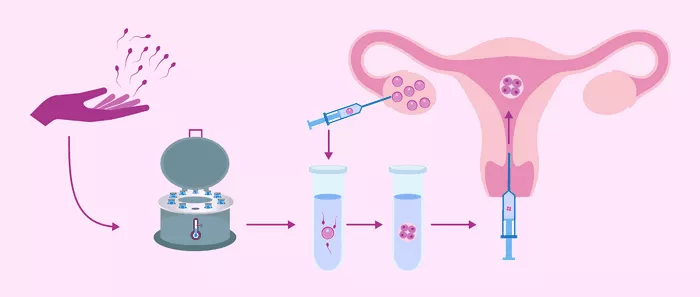Embryo transfer is a crucial step in the in vitro fertilization (IVF) process. The timing of this transfer can significantly impact the chances of successful implantation and pregnancy. Understanding the optimal day for embryo transfer is essential for couples undergoing IVF treatment. This article will explore the different stages of embryo development, the factors influencing the timing of transfer, and the benefits of selecting the right day.
Understanding the Embryo Development Stages
The IVF Process Overview
The IVF process begins with ovarian stimulation, where hormones are administered to encourage the ovaries to produce multiple eggs. After retrieving these eggs, they are fertilized with sperm in the laboratory. The fertilized eggs develop into embryos over several days.
Day 1: Fertilization
On Day 1, after egg retrieval, the fertilized eggs are assessed. This stage involves observing whether the sperm successfully penetrated the eggs. If fertilization is successful, the cells begin to divide.
Day 2 to 3: Early Embryo Development
By Day 2, the embryos are usually at the four- to eight-cell stage. On Day 3, they typically reach the eight- to twelve-cell stage. At this point, embryologists evaluate the embryos’ quality, which is crucial for determining the best day for transfer.
Day 5: Blastocyst Stage
On Day 5, some embryos will develop into the blastocyst stage. A blastocyst has a fluid-filled cavity and differentiates into two types of cells: the inner cell mass (which will become the fetus) and the trophectoderm (which will form the placenta). Transfer at this stage can lead to higher implantation rates.
Determining the Best Day for Transfer
The Timing Decision
The timing of embryo transfer is often categorized into two main options: Day 3 transfer and Day 5 transfer.
Day 3 Transfer
Day 3 transfer typically involves transferring embryos that have developed for about three days. This option is common and has been traditionally used in many IVF cycles. It can be advantageous when:
- The embryos are of good quality and are suitable for transfer.
- The patient has a low response to ovarian stimulation.
Day 3 transfers may be preferred in cases where the patient has fewer embryos or if there are concerns about embryo viability by Day 5.
Day 5 Transfer (Blastocyst Transfer)
Day 5 transfer involves transferring embryos that have reached the blastocyst stage. This method has gained popularity due to several reasons:
Higher Implantation Rates: Blastocysts tend to have better implantation rates compared to earlier-stage embryos. This is partly because they are more developed and more likely to successfully implant in the uterine lining.
Better Selection: Culturing embryos to Day 5 allows embryologists to select the most viable embryos. Poor-quality embryos may not survive to this stage, leading to a higher chance of transferring healthy embryos.
Synchronization with the Uterine Lining: By Day 5, the uterine lining is typically more receptive, improving the chances of implantation.
Factors Influencing the Decision
Several factors can influence the choice between Day 3 and Day 5 transfer:
Embryo Quality: The quality and development of the embryos play a significant role in determining the best day for transfer. High-quality embryos may be more suitable for a Day 5 transfer.
Maternal Health: The overall health and age of the woman undergoing IVF can affect the timing decision. Older women or those with specific health issues may benefit more from Day 3 transfers.
Previous IVF Cycles: History from previous IVF attempts may inform the decision. If prior Day 5 transfers were successful, there may be more confidence in selecting this option again.
Laboratory Conditions: The expertise of the embryology lab also influences the timing decision. Some labs may have higher success rates with Day 5 transfers due to their advanced culture techniques.
Benefits of Optimal Timing
Increased Chances of Success
Choosing the best day for embryo transfer can significantly impact the chances of pregnancy. By transferring embryos at the optimal time, couples can enhance their likelihood of successful implantation.
Reduced Risk of Multiple Pregnancies
Transferring a single high-quality blastocyst can help reduce the risk of multiple pregnancies, which can pose risks to both the mother and the babies. When transferring multiple embryos, there is a higher chance of having twins or more, which can complicate the pregnancy.
Improved Emotional Well-Being
Knowing that embryos are being transferred at the optimal time can provide emotional reassurance to couples undergoing IVF. This knowledge can reduce anxiety about the process and improve the overall experience.
What to Expect During the Transfer
The Transfer Procedure
Embryo transfer is a simple and painless procedure. The process generally involves:
Preparation: You will be asked to empty your bladder before the procedure. A full bladder can help position the uterus better for transfer.
Transfer Process: The doctor will use a thin catheter to place the embryos into the uterine cavity. This process typically takes only a few minutes.
Post-Transfer Care: After the transfer, you will usually rest for a short period before going home. You may be advised to avoid strenuous activities for a few days.
After the Transfer
Following the transfer, you will wait approximately 10 to 14 days before taking a pregnancy test. During this time, your healthcare provider may recommend avoiding heavy exercise, sexual intercourse, and other activities that could strain your body.
Conclusion
Determining the best day for embryo transfer is a critical decision in the IVF process. Both Day 3 and Day 5 transfers have their advantages, with Day 5 transfers offering higher implantation rates and improved embryo selection. Factors such as embryo quality, maternal health, and previous IVF experiences all play a role in this decision.
Ultimately, the goal of embryo transfer is to maximize the chances of a successful pregnancy. Collaborating closely with your fertility specialist can help ensure that you choose the best timing for your unique situation. As you embark on this journey, understanding the process can empower you and provide clarity during a potentially overwhelming time. With the right approach, the dream of parenthood can become a reality.
Related topics:

























